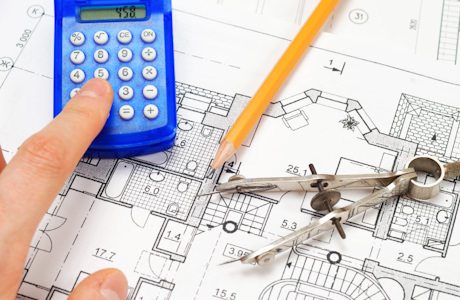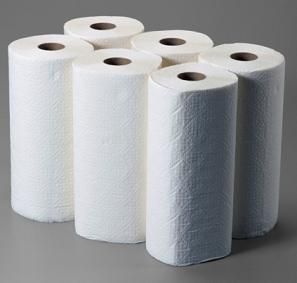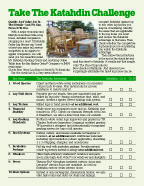 What is the cost-per-square-foot of a Katahdin Cedar Log Home? It’s a question that causes more confusion than clarity. In the past year, for example, Katahdin sold two homes with roughly the same square footage of about 2,000. Yet the price for the first one was $140/sq. ft. and the second ended up at $275/sq. ft. Each home had the same living area, but the cost was impacted by the individual design differences. So the answer, honestly speaking, is “It depends.”
What is the cost-per-square-foot of a Katahdin Cedar Log Home? It’s a question that causes more confusion than clarity. In the past year, for example, Katahdin sold two homes with roughly the same square footage of about 2,000. Yet the price for the first one was $140/sq. ft. and the second ended up at $275/sq. ft. Each home had the same living area, but the cost was impacted by the individual design differences. So the answer, honestly speaking, is “It depends.”
The cost-per-square-foot query is a common one, and certainly understandable. It’s human nature to try and distill complex  concepts into simple scales to assess value, pricing and the bottom line. It’s an approach that certainly works for common household items, such as paper towels. Supermarkets help consumers decide which package of paper towels is the best buy for them, based on price per square foot, number of rolls, and other features like colors or towel size. Pretty basic, right?
concepts into simple scales to assess value, pricing and the bottom line. It’s an approach that certainly works for common household items, such as paper towels. Supermarkets help consumers decide which package of paper towels is the best buy for them, based on price per square foot, number of rolls, and other features like colors or towel size. Pretty basic, right?
However, it’s when one starts to apply the cost per square foot calculation to a complex product that it becomes too simple. Ultimately it’s not a good strategy upon which to base an important and expensive purchase. Log homes, with their multiple variations on design, square footage, variations in quality of components, labor costs, among many other factors, are probably the last thing that should be priced on the basis of cost per square foot.
Yet, the question persists. The concept is appealing to log home companies who market on the basis of price alone: trumpeting deep discounts and seasonal specials with lots of fine print in the contract. To those of us who believe that it’s important to educate our customers—as well as provide a quality log home product—this simple question is one that is frustrating for both parties, because it cannot be answered simply. “The way I preface that price per square foot conversation is that it’s complicated,” said one log home show veteran.
A log home package may be priced inexpensively because it is log-only or shell only. Most first-time log home customers don’t realize how complex, time consuming, and costly procuring the additional items needed to complete the home is— especially when they are purchased piecemeal from a local lumberyard or box store retailer. Two-by-fours and truss systems designed for traditional stick-built homes may not withstand the stresses and pinpoint loads that a purlin roof system might exert. Buying a shell or log-only package may seem like a cost effective way to go, but it’s almost like buying bumpers, transmission, wheels, fenders and an engine to somehow put together into your dream convertible. While very few people contemplate that scenario, many people believe that assembling the parts for a log home piecemeal can save money. Somehow the end result is not always quite right.
Origins of the terminology
Calculating the cost per square foot of a finished building is a common way to determine value in both commercial and residential real estate for insurance, tax calculations and to compare rental spaces. Cost per square foot is used in determining carpet, paint, siding, roofing and other elements in shelter construction. And ultimately, once a home is completed, and the final price is tallied, cost per square foot is a reasonable and common calculation for insurance replacement value, home office space deductions, or tax assessments.

Better Questions
We encourage buyers who are contemplating different log home companies to compare and ask lots of questions. A good one to start with is “What is included in the price?” followed by “What will I need to add to the package to allow me to move into and live in the log home?” Many customers believe that they can hunt down deals on oriented strand board and rigid insulation to make up the difference needed to complete a minimalist log package. However, they may find the buying power of a large company providing all the necessary and properly engineered elements is a better and more economical way to go.
Perhaps the most useful question is “What is the turn-key price?” That is the price to walk into a fully completed log home. For that price, the customer will need to have some very specific ideas of what they want and the style and features of a new abode. A turn-key cost is quite a bit more realistic and informative than the generic and wildly fluctuating cost per square foot.
We do encourage customers to take the Katahdin Challenge, which will compare—item by item— the included elements from up to three log home companies for the same design in a Katahdin Cedar Log Home. And once the details are laid out, many customers realize that the “bargain” low cost per square foot log package is not such a deal after all.
One other thing to note in the cost per square foot discussion: the cost of cedar versus pine. The common myth is that cedar will be substantially more expensive that pine logs. This myth is completely dismantled once the customer understands the reality. As the largest primary processor of Northern White Cedar in the world, Katahdin is able to offer the benefits of cedar logs for the same price as pine. One more reason it pays to be as well informed about any log home package as possible.
